What annual vines can you choose for your garden?
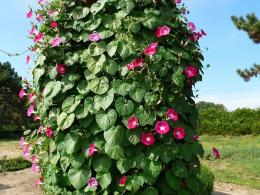
In any garden there are corners that need vertical gardening. Annual vines are ideal for those people who want to use new bright notes in the design of their site every year. Despite the fact that the choice of curly annuals for a temperate climate is not very large, we will try to consider the best of them.
Content:
- Eccremocarpus rough, description and cultivation
- Kobeya climbing, description, cultivation
- Dolichos, lobia and sweet pea
Eccremocarpus rough, description and cultivation
If there is a gazebo or a not-so-nice building in the garden that needs to be covered from prying eyes, then you can plant Eccremocarpus rougha nearby. This plant belongs to the genus Eccremocarpus from the Bigoniaceae family. It has a second name - rough visloporpnik. The plant was first discovered in the wild of Peru and Chile. The plant attracts gardeners with its growth rate.
During the season, the vine can easily overcome the mark of 3 and even 5 meters. The leaves of the plant are feathery and create the impression of lightness and airiness. The flowers are narrow, tubular or narrowly bell-shaped, collected in racemes at the tops of the shoots.
The length of the flower reaches 15 cm, the color is orange or red. Flowering begins in mid-summer and continues until the first autumn frosts. In place of the flowers, green fruits appear, they look like small peppers. The plant climbs vertical walls or supports with the help of numerous tufts of curly tendrils.
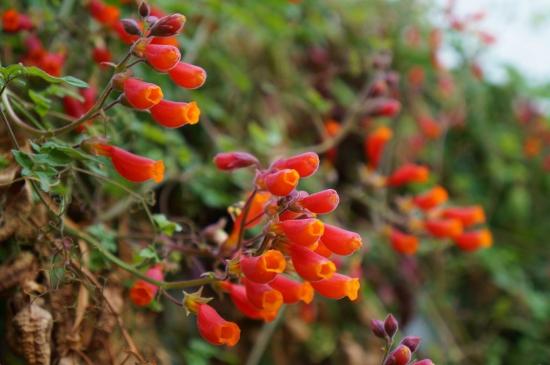
The plant has decorative forms:
- Treco Gold - the color of the corollas of this form is yellow-golden
- Treco Scarlet - flowers red or orange with a yellow throat
- Treco Rose - pink or cherry corollas with orange throat
In temperate climates, the plant is grown only as an annual crop.
Where and how to plant Eccremocarpus rougha
A quiet, sunny place near southern walls or slopes is suitable for this heat-loving plant. It is recommended that the soil for the plant be light and well fertilized with humus. The plant reproduces by seeds. They can be bought in specialized stores. If such a vine is already growing on the site, then you can collect the seeds yourself. If they are not ripe, they are cut off with part of the vine and placed in a suspended state for 4-5 weeks for ripening.
To grow through seedlings, seeds need to be sown in March in boxes with soil. Lightly sprinkle them with soil and sprinkle water on top.
Keep under glass until shoots emerge. At a temperature of + 16 degrees, shoots appear in 10 - 12 days. Seedlings for a permanent place planted at the end of May. Around mid-May, you can sow the seeds directly into the ground. In this case, flowering will occur a little later.
For normal development, the plant needs support on which it is fixed as it grows. The plant needs feeding every seven days throughout the entire period, until the end of August. The viper is not the only exotic vine from South America. Kobeya can also be grown as an annual crop.
Kobeya climbing, description, cultivation
In the wild, the plant is widespread in the tropical regions of South America. The climbing stems of the plant can grow several meters in a season.The leaves are compound, slightly wrinkled. The leaves at the end have long branched tendrils, which help the vine to develop vertical spaces.
Bell-shaped flowers. At the beginning of flowering they are pale green, at the end they are purple or white. The diameter of the flowers is from 6 to 8 cm. The stamens and pistils are long and most often protrude outward. Flowering begins in mid-July and continues until frost.
In temperate climates it is grown as an annual crop, although you can try replanting the plant in a container and keeping it in a cool place over winter. Decorative forms available:
- Wedding bells - white flowers, up to 8 cm in diameter, long stamens and pistil, hanging down
- Kolando - stems up to 4 m long, flowers 7 - 8 cm in diameter, flower color - blue-violet
- Amazon - shoots numerous, up to 4 m in length, flowers change color from light green to purple
- Lady Hamilton - shoots 3-4 m long, white flowers
Reproduction of Kobei
Kobeya can be propagated both by seeds and cuttings. To get cuttings in the spring, you need to transplant the kobeya into a container in the fall and keep the plant in a bright but rather cool room. Kobea seeds should be sown for seedlings in early April.
They are large in the plant and to obtain quick germination they can be soaked on a damp cloth placed in a saucer and the seeds can be covered with a transparent film. Until the seedlings appear, keep the seeds in a lighted place at a temperature of + 20. After this, the seeds are placed in planting pots, placing one seed per pot with the flat side, and sprinkled with a 1 cm layer of soil.
Video about the best decorative vines for the garden:
In early June, kobeya can be transplanted into open ground.Plants are placed at a distance of 0.8 meters from each other in a sunny place or in slight shade. Each seedling must be immediately tied to a peg. Caring for the plant is simple and comes down to watering and fertilizing. Problems with growing annual vines can also be solved with the help of familiar legumes and other plants.
Dolichos, lobia and sweet pea
Once upon a time, lobia and dolichos belonged to the same Genus Dolichos. Later, Lobia was separated into a separate genus. Dolichos has tall shoots, sometimes their length can be up to 6-8 m. The flowers are large, collected in racemes. One brush can have up to 40 flowers. Flower color can be white, yellow and purple. They form beans that have a beak and contain 2-4 flat seeds.
It is especially decorative in the fall, when one plant has young green and yellowing old leaves, there are ripening beans and newly opened flowers. Lobia forms many shoots up to 3-4 meters long. The leaves are composed of three parts. The flowers are white or purple-red.
In some countries, these plants are cultivated as edible. In temperate climates they are grown as annual vines for decorative purposes. Sometimes these plants are called hyacinth beans, climbing lilacs, and Egyptian beans. Grow These plants are conveniently grown through sowing seeds. In early April, they can be lightly rubbed with sandpaper before sowing.
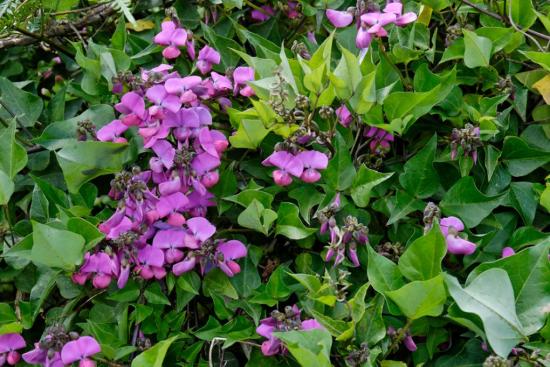
Place one seed in pots with fertile, moist soil. When the shoots appear after 10 days, you need to wait until the fourth true leaf appears and pinch the top. This will cause side shoots to grow. At the end of May, seedlings can be planted in open ground, providing the plant with vertical support. Caring for plants comes down to regular watering and fertilizing.
If lobia and dolichos bear fruit, then some can be left for planting next season, and some can be eaten. The only requirement is that the beans need to be soaked for a long time to reduce the content of glycosides. The more familiar representative of the Legume family, the sweet pea, can easily cope with the role of an annual vine. In addition to the above plants, they can be used as annual climbing vines nasturtium, morning glory, decorative pumpkins.

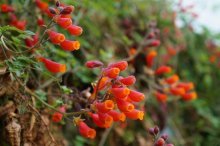

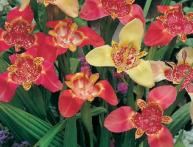
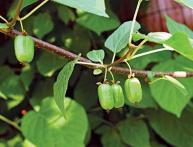
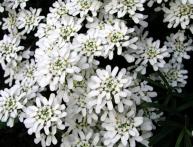
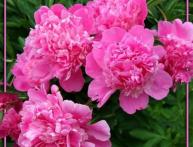
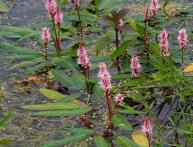

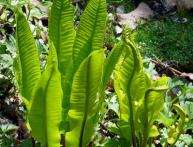

Comments
Lianas on the site are needed not only to create a beautiful, vertical, flowering surface, but also for landscaping, a lattice fence to close it from the eyes of neighbors. In addition to the listed plants, you can also plant Schisandra chinensis, or wild grapes.
For landscape design, in fact, there are many beautiful plants that you can grow in your dacha; vines can become a beautiful decoration for both the garden and the gazebo.